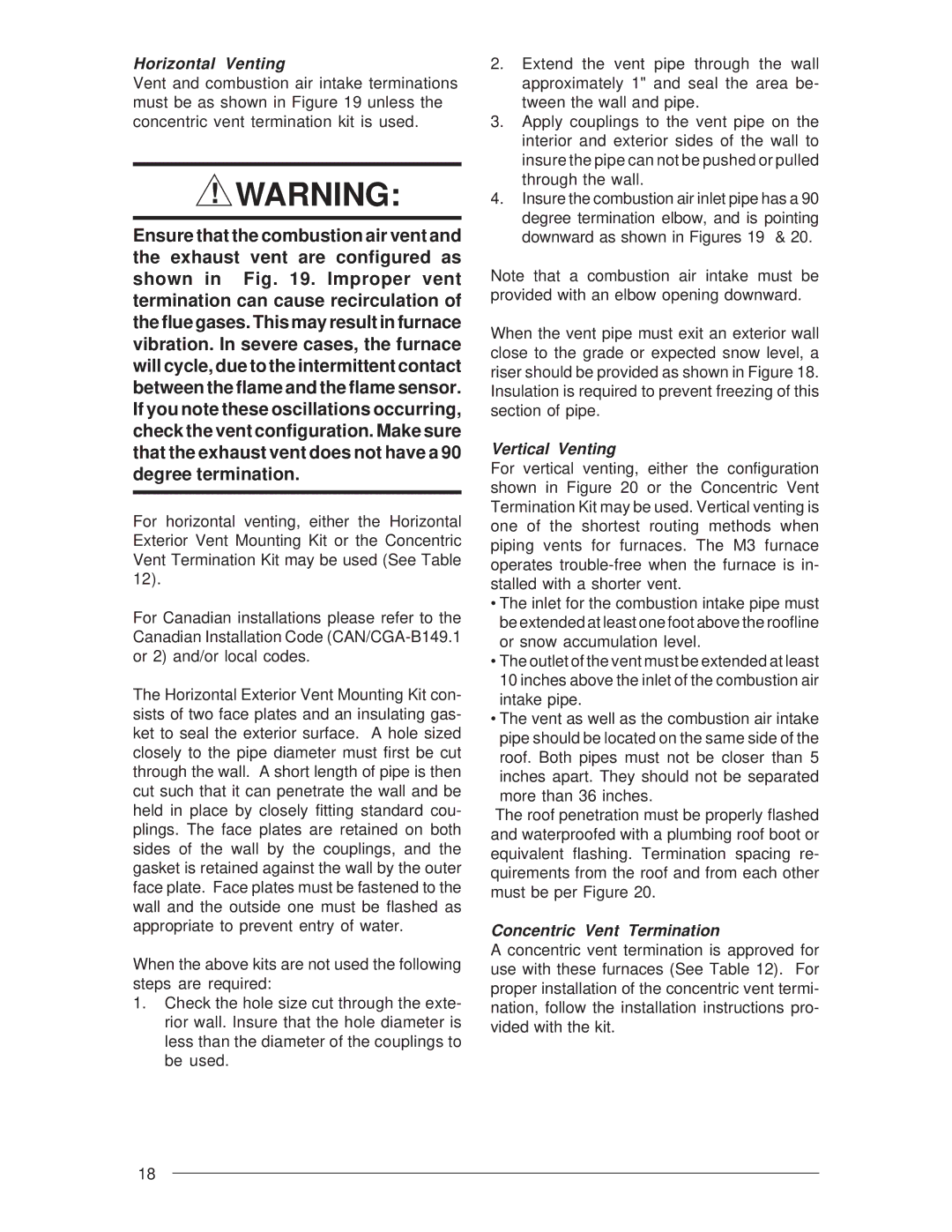M3RL Series specifications
The Nordyne M3RL Series is a cutting-edge line of residential heating and cooling systems designed to enhance home comfort while emphasizing energy efficiency and reliability. Engineered with the latest technologies, the M3RL Series stands out as a premier choice for homeowners seeking optimal climate control, advanced features, and quiet operation.One of the standout characteristics of the Nordyne M3RL Series is its high-efficiency performance. With Seasonal Energy Efficiency Ratios (SEER) that surpass industry standards, these systems deliver exceptional cooling power while using less energy. This efficiency not only translates to lower utility bills but also reduces the environmental footprint, making the M3RL Series an eco-friendly option.
Incorporating advanced inverter technology, the M3RL Series units operate at varying speeds, allowing them to adjust cooling and heating output to match the current demand. This feature ensures consistent temperature control while minimizing energy consumption. The systems are also equipped with a variable-speed compressor, which works in harmony with the inverter technology to provide seamless operation and quiet performance.
The M3RL Series showcases durability through its robust construction. The outdoor units feature a powder-coated finish to withstand the elements, while the indoor components are designed with high-quality materials to ensure longevity. The environmentally friendly refrigerant used in these systems further emphasizes Nordyne's commitment to sustainability.
Another notable aspect is the advanced control options available with the M3RL Series. Homeowners can choose from various thermostat solutions, including smart thermostats that offer remote control capabilities and programming features. This flexibility allows users to optimize their heating and cooling schedules, enhancing both comfort and efficiency.
In terms of installation, the M3RL Series is designed with versatility in mind. The compact and lightweight design of the units ensures ease of placement in various home layouts, while the comprehensive installation manuals and support from Nordyne make the process straightforward for HVAC professionals.
The Nordyne M3RL Series is truly a hallmark of modern home climate control, embodying efficiency, durability, and advanced technology. With its combination of high-performance features, user-friendly controls, and a commitment to sustainability, it provides an ideal solution for homeowners looking to enhance comfort while reducing energy costs. The M3RL Series represents a significant step forward in the evolution of residential heating and cooling systems.

